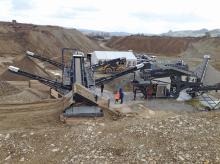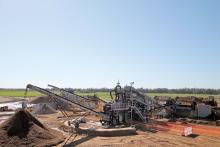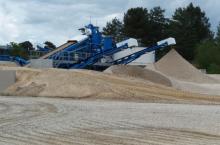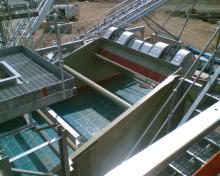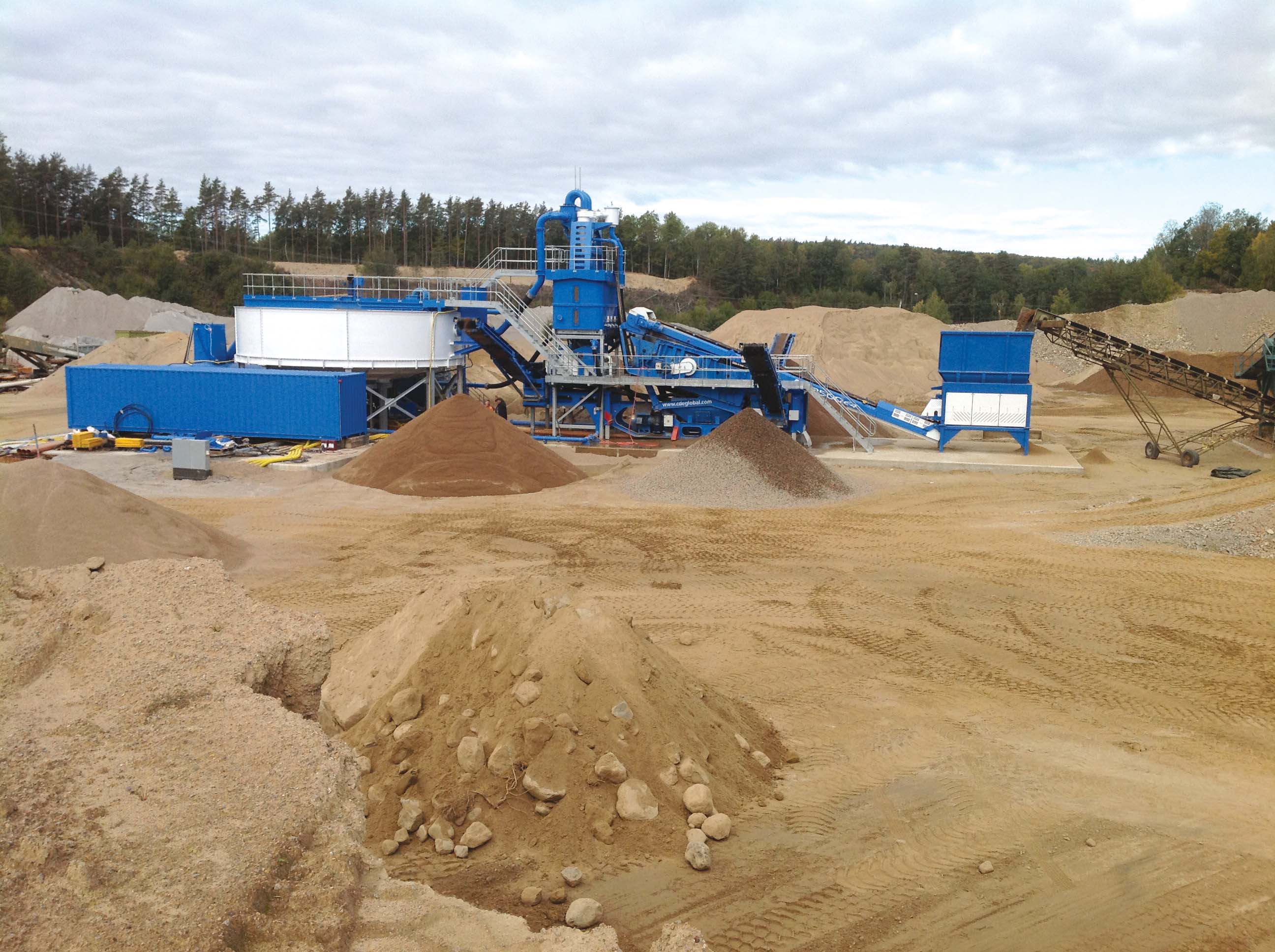
A new turnkey sand and gravel washing plant from
The rock and gravel/sand quarrying company, founded in 1922 by the grandfather and great-grandfather of the current owners, Peter and Thomas Björklund, operates three rock and gravel/sand quarry pits in Marieholm, Vånga Krossen and Fjälkinge.
The owners bought a CDE EvoWash in 2007 to capture fine sand which was being lost from an existing system, and in 2013 they decided to increase washed sand and aggregate production.
CDE was presented with natural sand and gravel feed material containing high levels of minus 250µm material. Bröderna Björklunds Grus required a 200tonnes/hour plant to produce three washed sands and two washed aggregates: a 0-0.25mm ultra-fine sand, a 0-2mm fine sand, a 2-8mm concrete sand, a 8-16mm aggregate and a +16mm aggregate.
Further requirements included an option within the design of the mobile plant for mixing and blending 0-0.25mm, 0-2mm and 2-8 or 2-5mm sands as required; that it should integrate with the existing CDE EvoWash on site and that it could successfully operate in extremely cold temperatures. These factors, and analysis of the material at the quarry, required CDE to design a bespoke solution.
Following a sieve analysis at the Olofström quarry, the CDE equipment specified for the project was a M2500 E4X mobile washing plant with integrated Counter Flow Classification Unit (CFCU) due to the high volumes of minus 250µm sand and an AquaCycle A600 thickener to condense the waste sludge into a high concentration slurry.
These would successfully integrate with the existing EvoWash 71 fines recovery system already installed, which enabled the system to output five fractions in real-time under computer-controlled classification. The plant also had two new and special features that were being tried for the first time by CDE: a dual sand conveyor with a diverter system and a winter pack Glycol system to combat frost.
Raw feed is delivered to the M2500 E4X via a S20 integrated hopper with a capacity of 20tonnes, and material travels up the feed conveyor with a fitted belt weigher, which enables Bröderna Björklunds Grus to monitor the flow of material through the plant while also having real-time access to operating capacity information.
Material enters the ProGrade screen, which is fitted with18 non-bolted Isenmann modular polyurethane panels, and +16mm material is removed on the top deck and stockpiled using the first of the M2500’s four conveyors. The bottom deck of the ProGrade is a split screen where the first part of the screen has smaller apertures so the 0-2mm material can pass through, and further down the screen deck the apertures are larger to allow the 2-8 or 2-5mm material to pass through. The remaining 8-16mm is removed on the bottom deck.
The EvoScreen dewatering screen on the integrated EvoWash sand washing plant is a split dewatering screen to allow two sand sizes to be dewatered at once and the 2-8 or 2-5 mm material is transferred via jet pump to one side of the EvoScreen.
Design engineers at CDE introduced an innovative concept to meet with Bröderna Björklunds Grus’s requirement for mixing its 0-2mm and 2-8 or 2-5 mm sands when required. The dual sand conveyor with a diverter system allows the conveyors to be moved hydraulically to match the mats in the dewatering screen. The chassis of the machine has been redesigned to have two supporting legs at each side rather than one central leg which stabilises the plant in order to perform the conveyor adjustment.
This special feature has since been introduced as a permanent design enhancement as a result of the success of this Swedish project.
After dewatering on the EvoScreen, 2-8mm material is stockpiled via the third M2500 conveyor, and a sand pump transfers the 0-2mm material to the next stage of processing, the CFCU, which uses upward flow classification to separate particles by density, and eliminates the oversize sand particles from the final sand product.
“The CFCU operates successfully in this project due to the inclusion of a Glycol system, a first for CDE. Glycol was used in place of air to ensure maximum uptime in the coldest conditions,” says CDE.
The 0-2mm material is sent to the second half of the EvoWash dewatering screen for stockpiling via the fourth conveyor on the M2500. The CFCU overflow contains 0-0.250mm material, which still contains valuable product and is therefore transferred to the next stage of processing, the CDE EvoWash 71. Here the material enters the EvoWash sump, is pumped to the hydrocyclones and a fine 0.063–0.250µm sand is dewatered and stockpiled on a fifth conveyor.
The fine material removed in the CFCU through the two 500mm hydrocyclones is sent to the AquaCycle A600 thickener, along with the 0.063µm material from the EvoWash hydrocyclones. The AquaCycle thickener recovers up to 90% of the water used in the plant and complies with ever-increasing environmental requirements from planning authorities.

